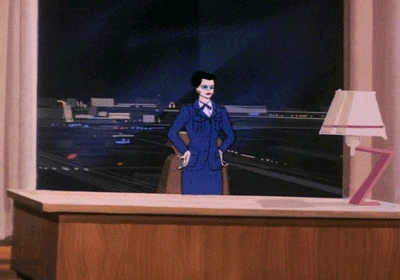I was wrong.
Turns out, once the book became a DC TV comic, it was actually very strongly tied to the show. I'll explain.
See, when DC decided to launch a new Captain Marvel series in December 1972, they made it a continuation of his original series...which hadn't been published in 20 years. There are ways of doing that and having it work, but sales suggest whatever they did didn't work.
Luckily, a Shazam! tv series debuted in 1974 and it was a huge hit. Like many shows in the 70s, it involved Billy Batson travelling to a new town each episode and dealing with whatever trouble was there. Since he was still a minor, he was accompanied by an original character called Mentor, and they travelled together in a Captain Marvel-branded RV.
In Shazam! #25 (August 1976), Dr. Sivana threatens to attack a bunch of American cities. Billy doesn't know how he can protect all those cities since he has a job in New York, but luckily, his boss gets the idea to send Billy on a cross-country trip.
In Shazam! #26 (October 1976), several things of note happen. First, it's pointed out that Uncle Dudley grew a mustache and Billy's hair is getting longer, making them both look more like the leads in the show:
Second, the wizard Shazam tasks them with travelling across the country, and Shazam says Dudley needs to be like Mentor, the mythological character. (I find it interesting that Billy's boss had the idea to send him across the country but Shazam is carrying it out. Is Shazam secretly the manager of WHIZ?!)
Third, Shazam gives Billy a device called the Eterni-Phone to summon one of the people that make up the SHAZAM acronym (Solomon, Hercules, Achilles, Zeus, Atlas, and Mercury). This is based on a device in the show that performs the same function.
Finally, WHIZ-TV gives Billy an RV that strangely has the Captain Marvel lightning bolt on the front. (I'm telling you: Sterling Morris and Shazam are the same person.)
Interestingly, in the very same issue that moves the book to tie so closely to the tv show, there's also a reference to a recent team-up Captain Marvel had with the Justice League and Justice Society with a footnote to the relevant issues. More evidence to support my stance that DC TV comics are in continuity despite the title.

















































